 |
| Home | Ordering By Mail | Purchase Manual: Using Native Plants in Urban Landscapes |
|
|||||
School Wildlife Gardens
Installation of habitat garden at a middle school.
WON supplied plants and expertise and two school classes provided the muscle.
After some instructions the two classes edged the beds, installed the plants, laid newspaper to suppress weeds
and covered the whole bed with bark mulch. The whole job was finished in just two short hours and a professional looking landscape was complete.
The planting was so successful that it was duplicated the nexzt two years with new school classes.
WON partners with all types of groups from schools to land trusts and conservation organizations to further environmental, education and conservation goals.
WON can work with you to accomplish your groups goals.
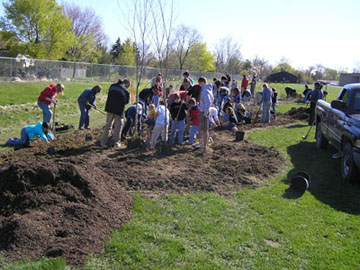
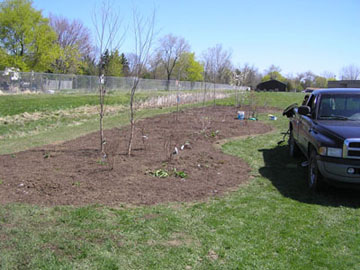
Students planting and mulching the garden and the completed installation
Most public gardens turn out to be tiny plantings the size of a car, often labeled as butterfly gardens. These serve an education function but contribute little for nature. For a habitat garden to really provide habitat it needs to be as large as possible. Include mostly trees and shrubs to provide maximum habitat for the space. Woody plants provide more structure and wildlife benefit than perennials alone.
Here is a good example of a functional habitat garden. The bed is 100ft long and 30 ft across, it contains a dozen trees, flowering trees, shrubs and a mix of perennials.
The planting satisfies the aesthetic needs of the school and visitors. The garden is filled with ornamental plants and they are arranged in an attractive display. In season the garden provides beautiful flowers, fruit, attractive foliage and fall color. It also functions as an outdoor living classroom for the school. As the garden matures it will provide cover and habitat for birds, insect and butterflies where only grass existed before.
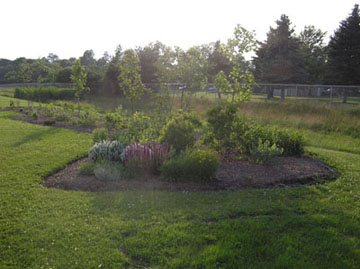
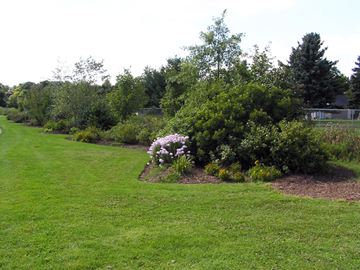
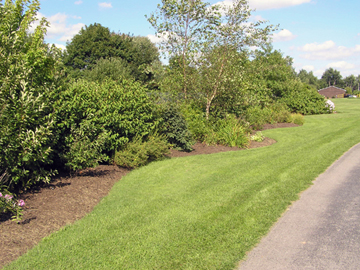
Garden after one season and after the 4th season in second and third pcitures
Species used in the garden:
Trees: Sugar maple, River birch, Pin oak, Serviceberry, Pagoda dogwood, American chokecherry
Shrubs: Spicebush, Summersweet, Fragrant sumac, Red chokeberry, Red twig dogwood, Winter berry, Nannyberry, Silky dogwood
WON can work with you, your school or organization to create a similar garden or project.
Habitat gardens are easy to create and maintain. A planting of this size can be installed for $500 to $800. Package includes design, plants and personal instruction on everything you need to know to prep, plant and maintain the garden.
this page posted August 20, 2010